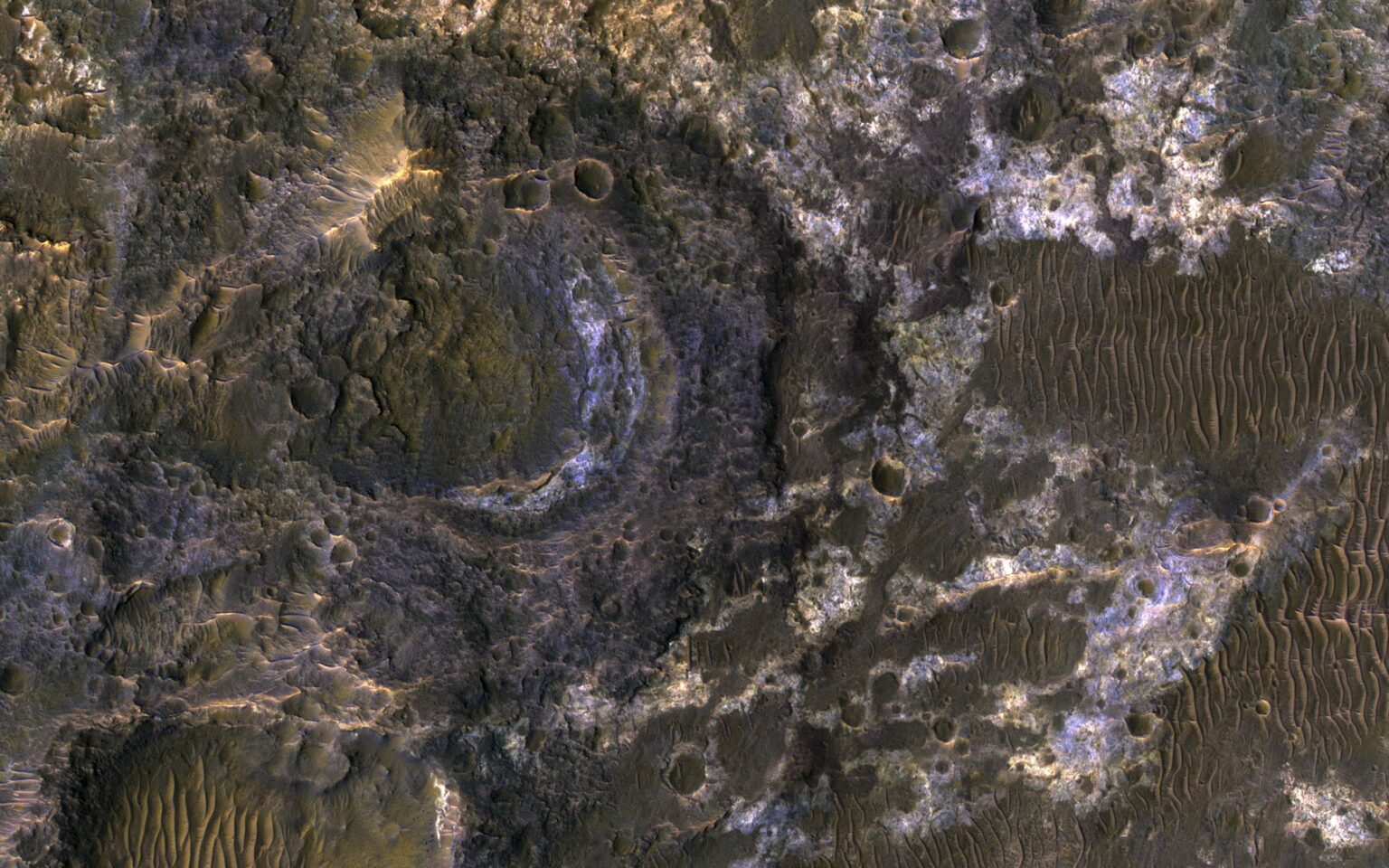Studies of the Ladon Valley on Pearl Land on Mars have allowed the discovery of significant deposits of clay-like materials. They were formed in the period from 3.8 to 2.5 billion years ago. This indicates the presence of liquid water currently.

Clay on the Margaritifer Terra
Scientists have found significant deposits of clay-like rocks on Mars. For this, they used data from the High Resolution Imaging Science Experiment (HiRISE), Context Camera (CTX) and Compact Reconnaissance Imaging Spectrometers for Mars (CRISM), which are located on the Mars Reconnaissance Orbiter spacecraft.
Their goal was the Ladon Basin, located on a section of the Martian surface known as the Margaritifer Terra. Studies have shown the presence of rocks in this area that resemble clay in their composition. Their age ranges from 3.8 to 2.5 billion years.
Clays can be formed only under conditions of neutral acidity, when the surface is covered with water for a long time. In other conditions, the soil dries up quickly and sulfates are formed, of which there are many in other parts of the red planet. All this means that the climate in the Margaritifer Terra area remained warm and humid for a much longer time than it was previously thought.
Ladon Lake
According to research, water has flowed in the Ladon basin area for hundreds of millions of years. The area around this depression at a distance of up to 200 km is covered with clay. The recess, as well as the valley to the north of it at that time, were one or more lakes.
The older layers of clay were formed on a hill around the Ladon and then were washed away by water. The youngest streams flowed into the lake from the southwest. They are much less powerful, which indicates the gradual drying up of the red planet.
All this proves that the area of the Jezero crater, where the Perseverance Rover is currently operating, is no exception. Water flowed everywhere on old Mars. And if life did exist on it, then it was spread over most of its surface.
According to phys.org
Follow us on Twitter to get the most interesting space news in time
https://twitter.com/ust_magazine
